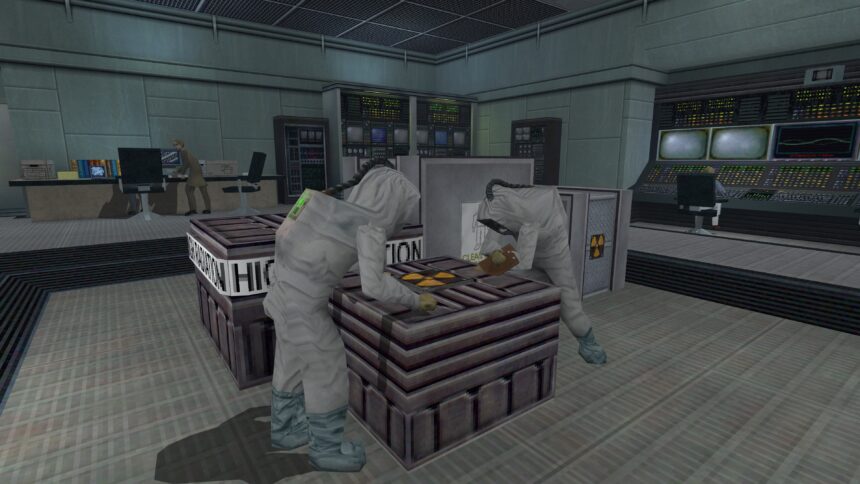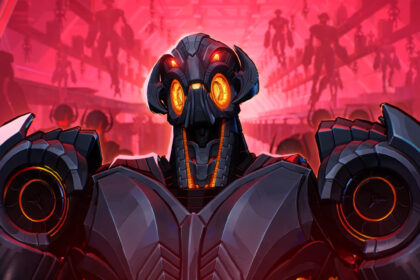I’ve always said that my favourite chapter in Half-Life is Office Complex. In a game all about recontextualising the FPS from abstract mazes into a realistic, coherent setting, to me Office Complex felt like the ultimate expression of that. It’s the most mundane part of Black Mesa’s clandestine research facility, swapping the hellscapes of Doom and the fantasy realms of Heretic for a cold and clinical administration centre.
There are no fancy laboratories, rocket silos, or experimental weapons manufacture here, just dimly lit workspaces connected by chequerboard-tiled corridors. Its wildest indulgence is an implausibly large freezer, which given the number of people who need to be fed in Black Mesa, probably isn’t all that implausible in any case.
Unfortunately, time is a devious little rapscallion, and upon a recent return to Half-Life, I was shocked to discover that Office Complex is, in fact, quite boring, with little of the survival-horror-ish tension that I recall. There are hardly any offices, and it isn’t very complex. Perhaps Valve should have called it Corridor Simple.
Hence, the greatest compliment I can afford Half-Life Extended is that it gives Office Complex the level design such a name deserves. It transforms Valve’s basic layout into the nightmare administrative warren that I (mis)remember from my childhood, generating those same feelings of tension and disorientation.
Like Black Mesa, Half-Life Extended is yet another mod that aims to remake Valve’s industry-reshaping 1998 shooter. But its goals are very different from the work of Crowbar Collective. Whereas Black Mesa was primarily designed as a visual upgrade (at least, until you get to Xen) Half-Life Extended targets the shape of the FPS. It overhauls the game’s levels, expanding them in both length and breadth while filling them in with significantly more detail. But it contains itself to the game’s original engine and aesthetic—flappy-mouthed scientists and all.
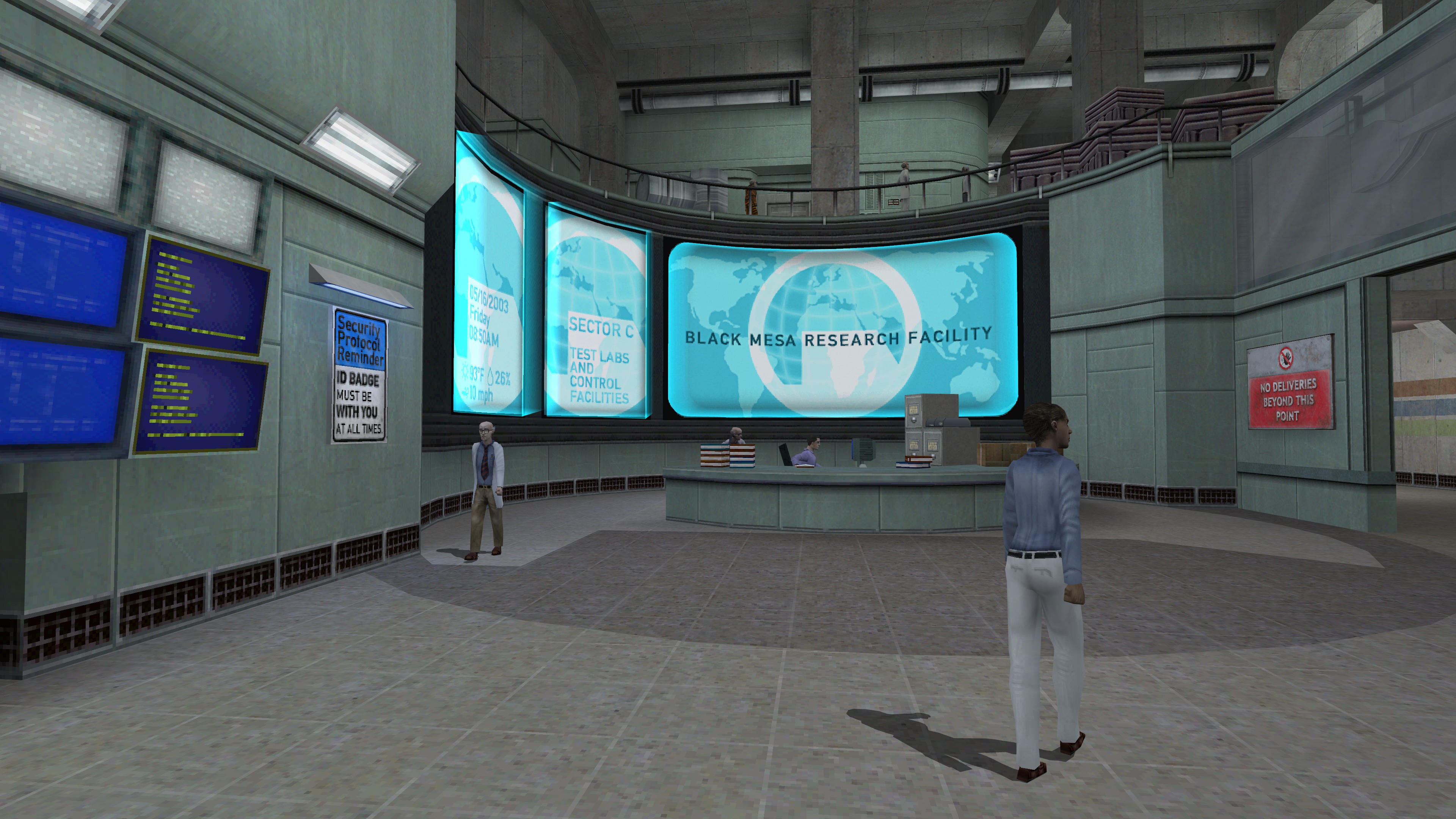
Currently, Half-Life Extended exists only in demo form, allowing you to play through four of the game’s initial levels. If that seems like odd phrasing, it’s because Extended lets you play through the Hazard Course tutorial, but skips the introductory tram ride, dropping you off directly outside Anomalous Materials.
The changes are clear from the moment you step off the tram into Anomalous Materials’ reception.
This does not mean Half-Life: Extended is short on things to see. The changes are clear from the moment you step off the tram into Anomalous Materials’ reception. This area has been given a much more elaborate desk setup a-la Black Mesa. But it’s once you pass beyond this area where Half-Life: Extended sets itself apart.
The locker-room area has been completely reworked, now including shower cubicles and a much larger cafeteria. Entire new rooms have been added, such as a lab where hazmat-suit wearing scientists are handling radioactive material. Getting down to the test chamber requires you to pass through multiple new labs where unique experiments are being conducted. Even the test itself plays out differently, with you darting across gantries to trigger each new phase of the anti-mass spectrometer’s activation before pushing that fateful sample into the beam.
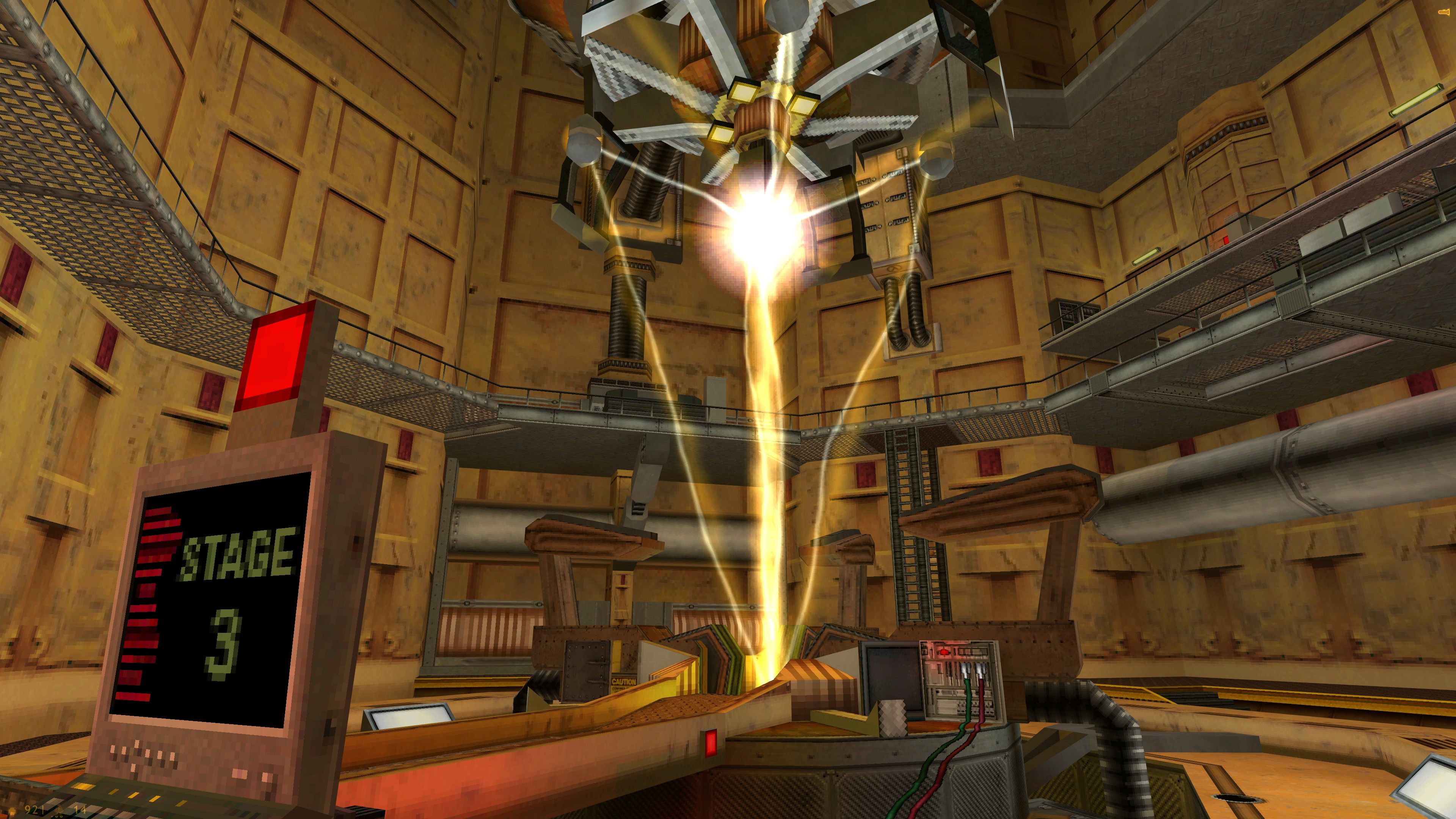
Running through these areas is a bizarre experience at times. Everything looks and sounds like Half-Life, and all the key plot points are present and correct, but everything is that much more filled in. I don’t want to say “It’s like how you remember Half-Life”, partly because it’s a hackneyed phrase, but also because it’s not true. I know Anomalous Materials didn’t look like this, and yet everything in the mod’s reimagining is so seamlessly integrated that it’s hard to believe that.
This continues through into Unforeseen Consequences, which intensifies that initial scramble for survival with new and expanded hazards. That bit where a computer rack nearly falls on you? Now there’s a whole sequence where you dash through a cascade of exploding equipment. That radioactive substance you saw those hazmat fellas moving? Guess what’s leaked all over the floor in that area. That bit where you jump across a bunch of dangling crates? Now you circle back to that area to rearrange the crates for a second crossing.
There are also lots of little extra details that I appreciate. For example, when you drop deeper into the facility where the giant freight elevator is, the area you descend into is clearly a much older part of Black Mesa. The digital computers are replaced with tape-racks, and the health and HEV dispensers are of a different, more antiquated design.
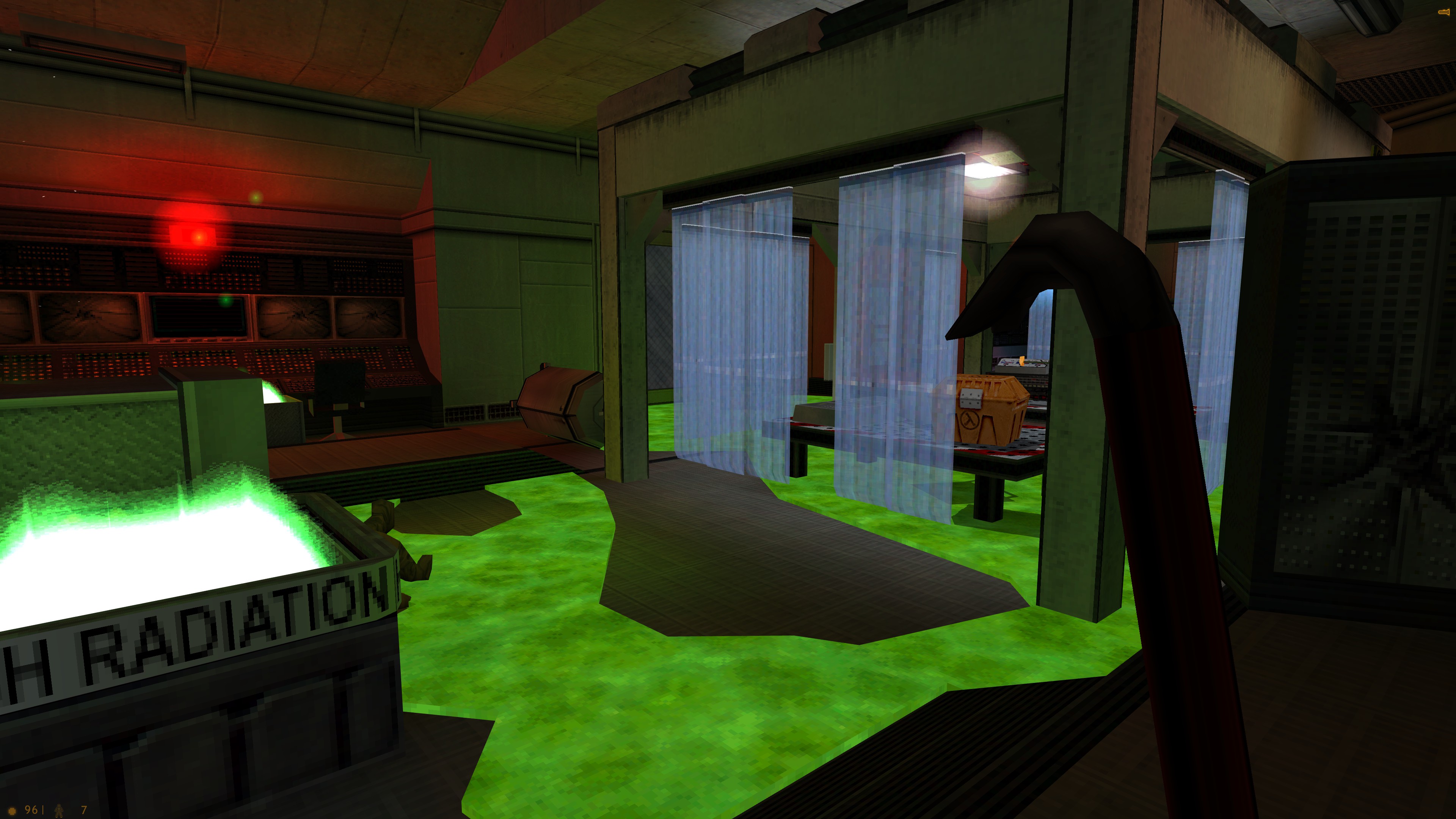
It is Office Complex, though, where the changes are most dramatic. It’s much wider and more open-feeling than the original, with several elaborate new sequences to play through. Indeed, there’s a whole side area you could easily miss, and doing so will mean you don’t pick up the shotgun until much later in the level. It also feels more like a distinct part of the facility, with its own reception, admin wing, executive lounges, and security office.
So does Half-Life: Extended make Valve’s classic better? That feels like a dangerous assertion. There are things about Extended that I don’t like. The mod adds a new enemy type that I didn’t particularly enjoy fighting, while the freezer section at the end of Office Complex, which was never the best bit of Half-Life, is now even longer. Black Mesa’s redux of the Interloper chapter demonstrated the perils of overegging a remake, and there are moments where Half-Life extended threatens to do the same.
Regardless, I’m not really interested in which is better. What fascinates me, as I mentioned, is how naturally all this extra stuff folds into the vanilla experience. This is largely down to the careful work of the mod team. But I also think it has something to do with Half-Life itself.
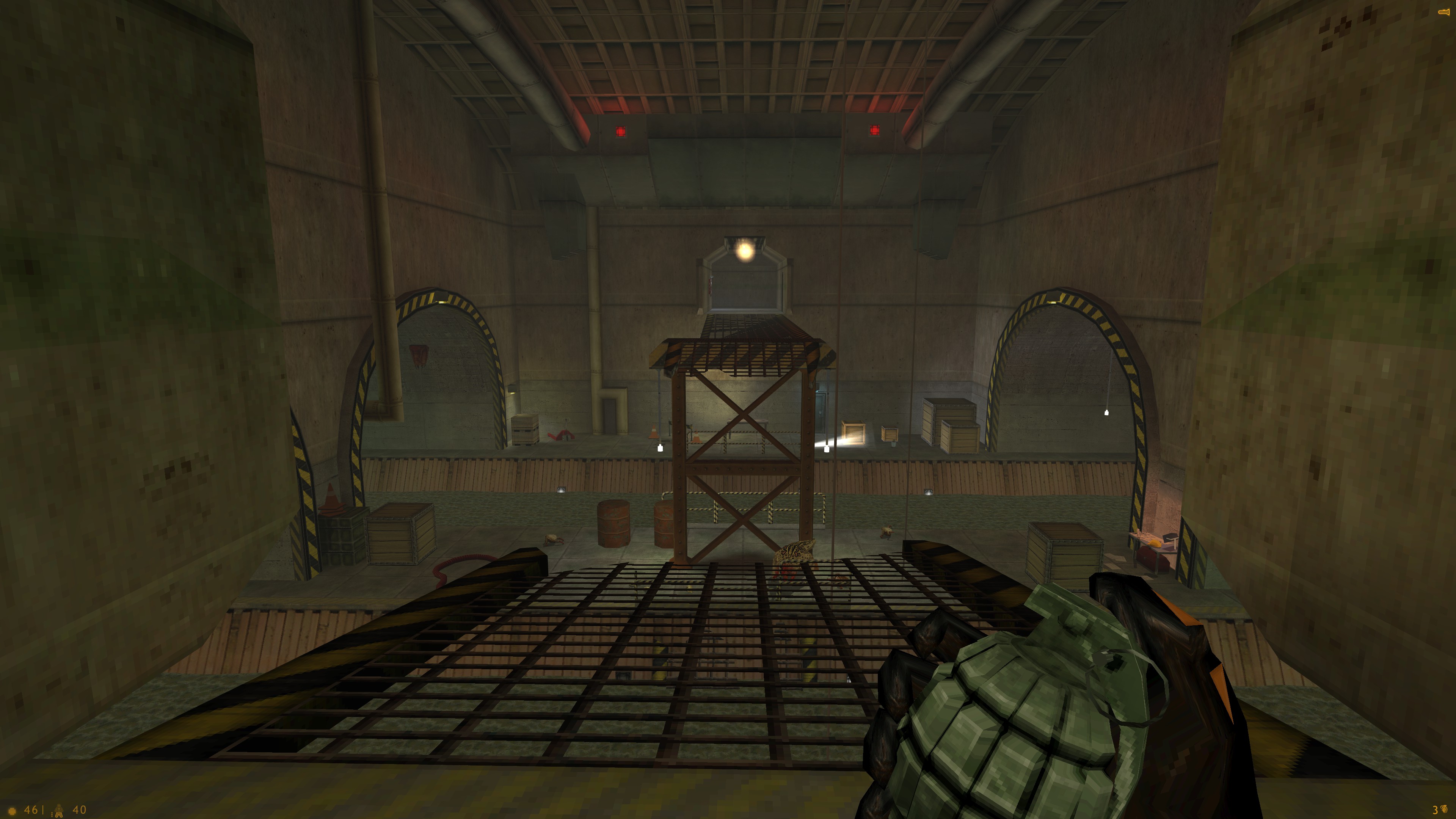
I’ve always been fascinated by how well Half-Life, and Black Mesa particularly suits supplementary storytelling. We’ve seen it from countless different perspectives both official and unofficial, and yet it never seems to lose its mystique or appeal. No matter how much you learn about it, there always feels like more to uncover. Its labs and corridors sprawling beneath the Arizona desert with endless, fathomless potential.
In a way, it’s comparable to collaborative internet fiction like SCP, with a structure and aesthetic that’s specific enough to focus the imagination, but so long as you present it in the right way, anything could be going on down there.
The expansions play a significant role in this. Because Opposing Force and Blue Shift show us the same story from new angles, they seeded this idea that Black Mesa stretches far deeper than what we see through Gordon Freeman’s eyes. But this wouldn’t have been possible if it were not for how Valve approached presenting the original, refusing to strictly codify Black Mesa as a space.
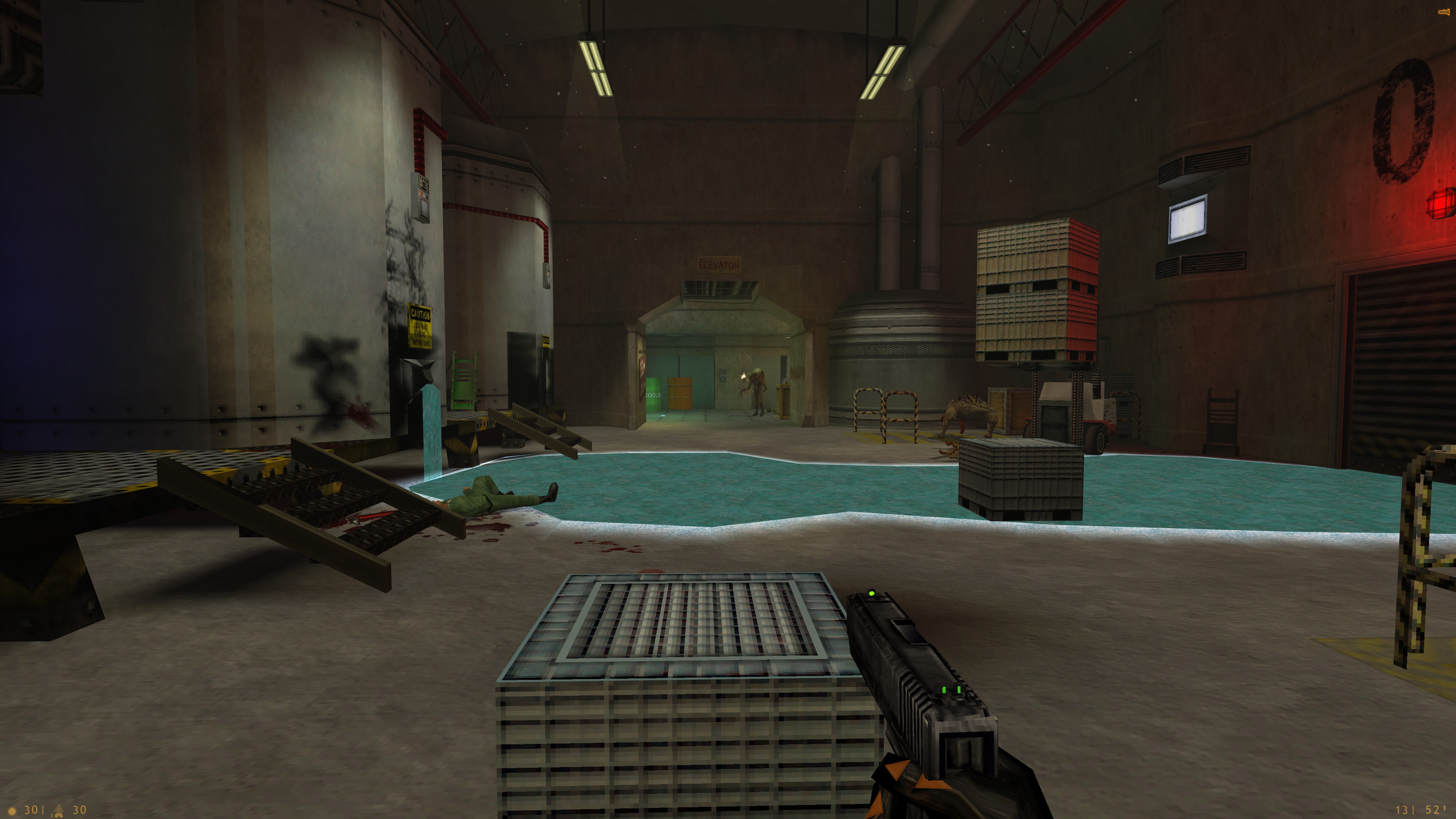
While Half-Life is often heralded as the first step toward cinematic storytelling in games, its approach to telling that story is light and indirect, depicted visually with only a few spoken lines to contextualise what’s happening. If Half-Life had been made today, every hazard sign and research device would have an attached lore codex explaining in detail why it was there and what its history was.
Which is great for YouTube videos, but it makes it harder for players and, indeed, other developers to riff off a work in a way that feels true to the original. This is why I think modders are still obsessed with making new adventures within Black Mesa, nearly 30 years on from Half-Life’s heyday. Half-Life changed the FPS with the story it told, but perhaps its bigger impact upon gaming was leaving the blast door open for other people to tell their version of it.
Read the full article here



